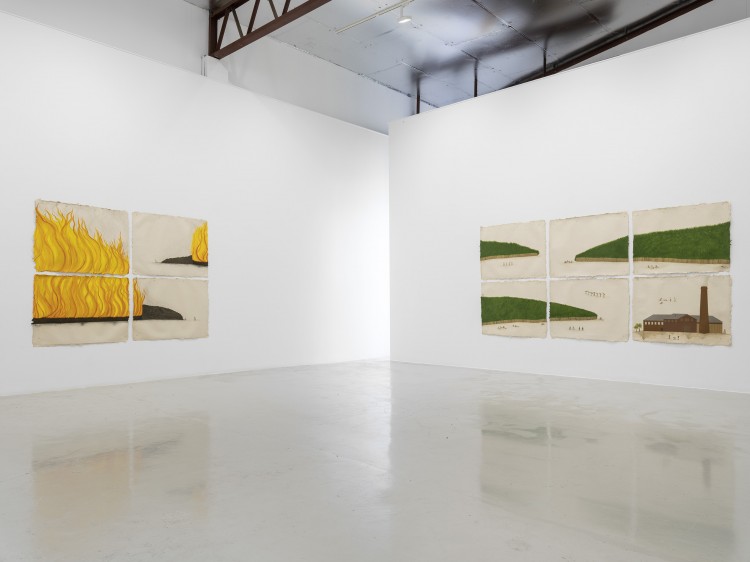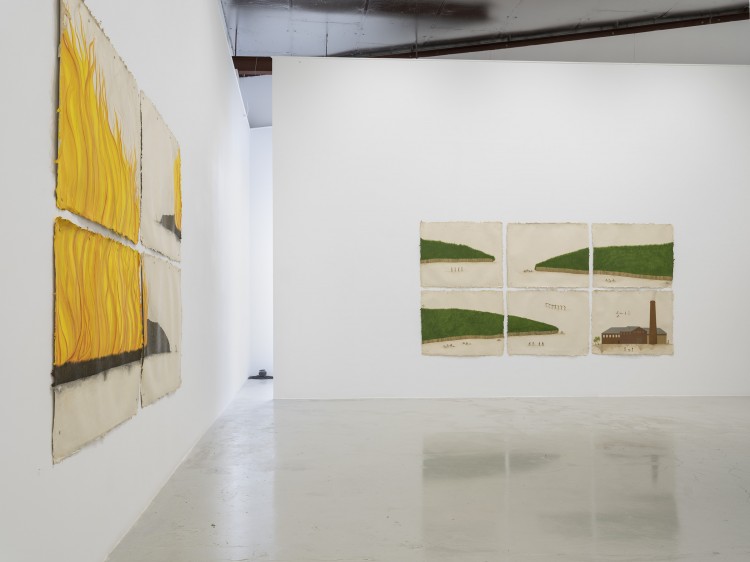The Plantation, 2022, watercolour and gouache on handmade wasli paper, 6 panels, approx. 125 x 95cm irreg. each.
The River, 2022, watercolour and gouache on handmade wasli paper, 4 panels, approx. 125 x 95cm irreg. each.
The Fire, 2022, watercolour and gouache on handmade wasli paper, 4 panels, approx. 125 x 95cm irreg. each.
Studio assistance: Isabel Wengert, Miri Badger, and Sidonie Hall-Jordan.
Art Gallery of New South Wales Collection.
The panelled paintings, The Plantation, The River and The Fire tell a fragmented story of the experience of indenture for Indian women on the sugar colonies through three main landscapes of the sugar plantation. Simpson has chosen to illustrate the complexities of their experience: of their oppression, resistance and their contributions of domestic and agricultural labour rather than a stereotyped colonial interpretation.
This portrayal is drawn from the archives to acknowledge the history and experiences of women taken from India to South Africa as indentured labours during from the late 1800s to early 1900. A process that attempts to uncover a hidden and often erased history of exploitation. Gaps in knowledge dislocate these figures from the landscape and location. Simpson reframes the ownership of this history and pays tribute to the women who came before her so they are not forgotten.
These works use the technique of Indian Miniature painting, which Simpson learnt in Jaipur, India in 2013. Traditional miniature painting in South Asia focuses on privileged persons in terms of gender, caste, class and colourism. Simpson’s use of the style of miniature painting centres casteless coolie women bringing their history forward and allowing their stories to be accounted for, acknowledged and recorded. She uses this form of painting, in a simplified manner, leaving the edges of the paper untrimmed, and the wasli paper visible to acknowledge the gaps of knowledge of this history and missing stories.























